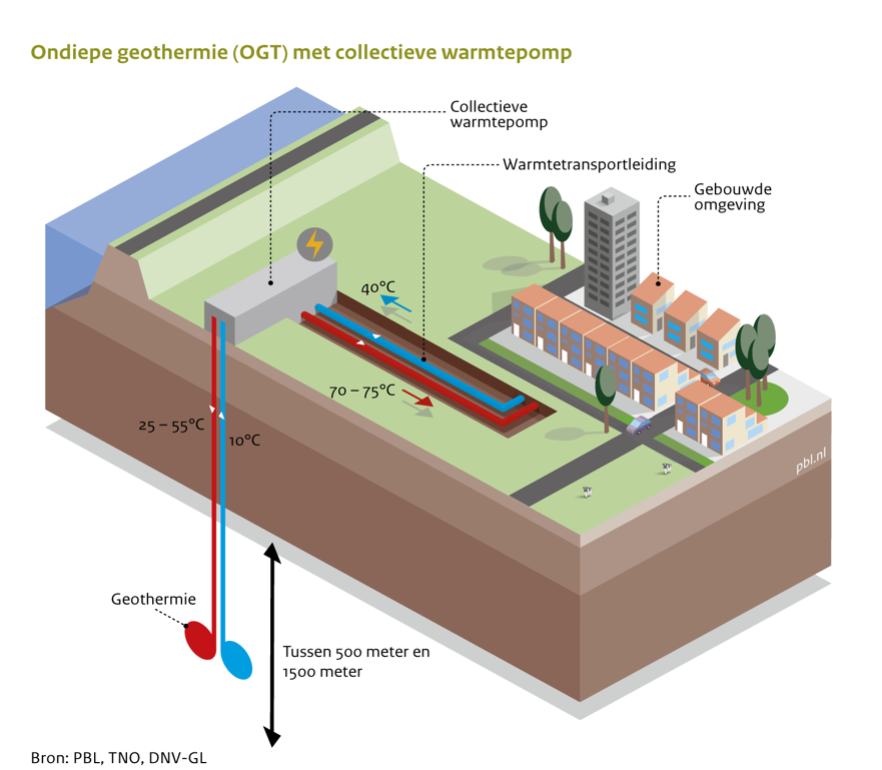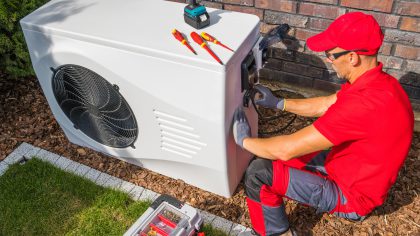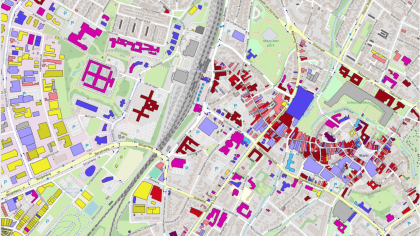This technology represen ts the application of heat production from shallow geothermal formations in The Netherlands and delivery of heat to the built environment. A typical project exists of two wells, a production and an injection well, also called doublet. The wells are either fully vertically drilled or with a curvature. The bottom of the wells is situated in a water holding layer, and it lies between 500 and 1500 meters below ground level. In the Netherlands, water holding layers of sand, clay or sandstone are found in this range (geological formation “Noordzee groep”). The temperature of the extracted warm water varies typically between 25 and 55⁰C depending on the depth and the type of layer. Salty warm water (brine) is pumped up through the production well, but needs thermal uplifting to a useful temperature level of 65-75⁰C through means of a heat pump. After heat exchange in the collective heat pump, the cooled brine water is injected back underground through the injection well. In principle there is no loss of water. The injection temperature lies around 10⁰C. The installation consists of two bore holes, usually in steel with liners, a production pump (Electric Submersible Pump, ESP), an above ground collective heat pump and an injection pump. In some cases, anti-scaling prohibitors may be required and need to be added in the brine flow. Although systems with low temperature heat delivery to buildings, each equipped with an individual heat pump, are considered for the SDE++, we choose as a reference a system with a collective heatpump. A heat network or a heat distribution network may be required, but it is not part of this factsheet. The connection to a network as well as a heat transfer station between the heat pump and the distribution network are included in the reference system and thus in the cost figures.

All information in the datasheets is also available in ESDL (Energy System Description Language). You can find them in the Energy Data Repository (EDR).


